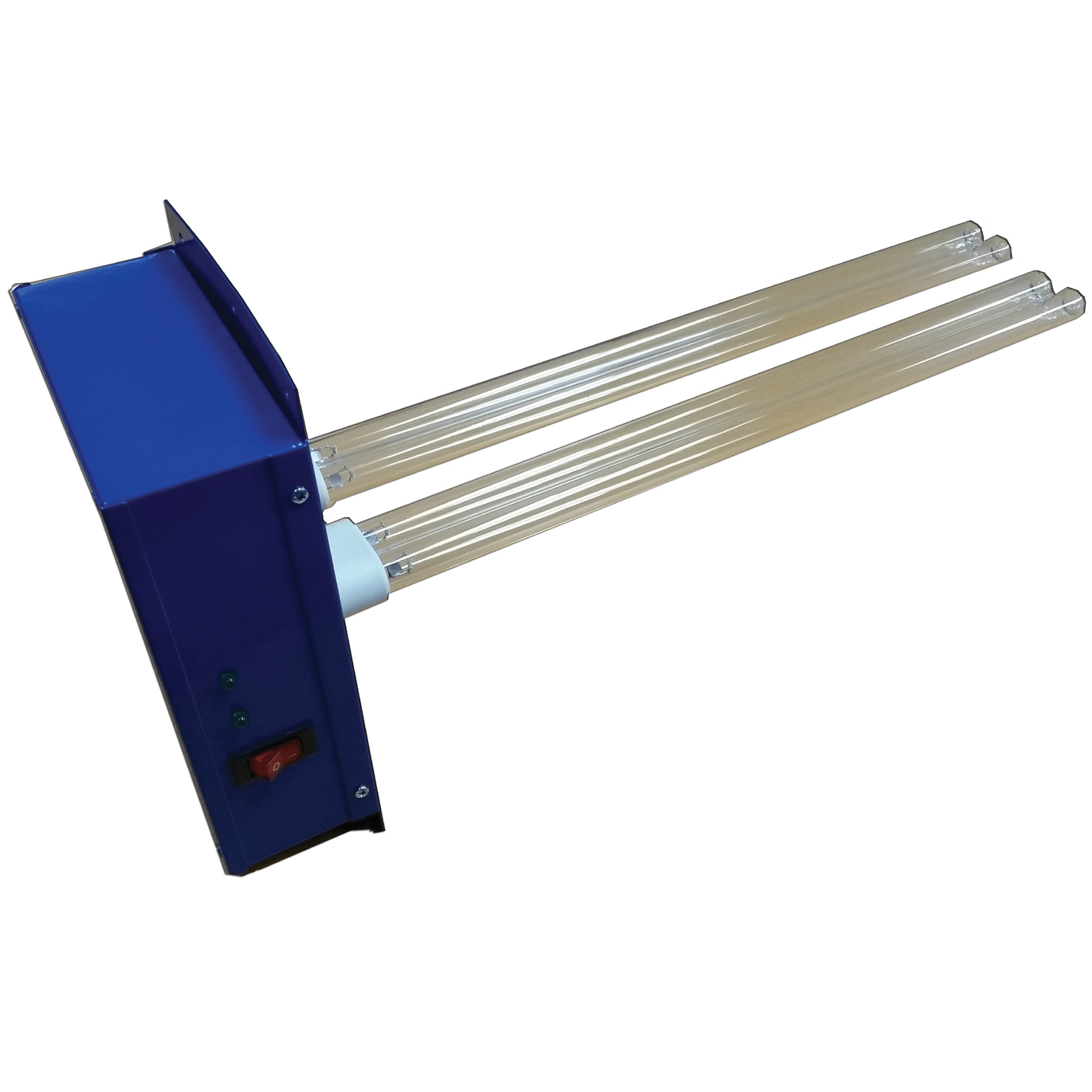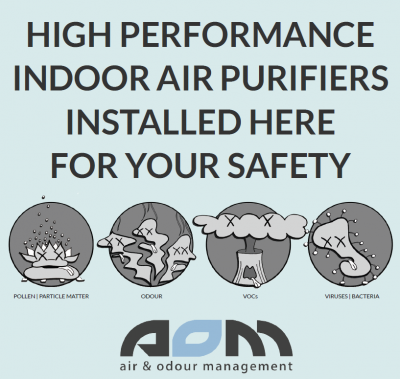
Indoor Air
Improving Indoor Air Quality for the benefit of You, Your Family, Your Staff and CustomersRegarding COVID19 air borne transmission
The airborne transmission of COVID19 is largely accepted by the scientific community, notable in poorly ventilated public spaces (see Morawska & Milton 2020). Air borne particles have been shown to remain active in air for up to 3 hours. These areas include: areas of restaurants with limited ventilation, lifts, bathrooms and restrooms, closed office spaces including dentist and doctor consultation rooms, etc.
A key scientific recommendation towards minimising the risk of air borne transmission is to Supplement general ventilation with airborne infection controls such as local exhaust, high efficiency air filtration, and germicidal ultraviolet lights.
For this reason AOM Australia now distributes and designs/manufactures a range of high efficiency indoor air filters that go beyond simple high efficiency particle filtration.
Please get in contact with for any questions regarding specifications, prices, installation and servicing of this equipment. All purchases include visuals to reassure your customers and staff.
AOM offers a range of indoor air cleaning products for all types of applications. Using the latest technologies in indoor air purification our products are top of the range, guaranteeing clean indoor air for you, your family, your staff and your customers.
These include:
- AOM AirSanitiser: AOM exclusive designed plasma air filter focused on air sterilisation by removal of Odours, Volatile Organic Compounds as well as Virus and Bacteria for sanitised air. Generally used in wash/bathrooms for odour removal and in small indoor space such as dentists / doctors studios.
- AOM AC95000: High Efficiency and multistage stage portable air filters that is generally used in health care, residential and office environments for the most in depth treatment of air
- AOM AC Range: The range of AOM Multistage and Multi purpose AC model indoor air cleaners that can either be Ceiling Mounted or Portable and generally used in a commercial setting.
- AOM UVC Range: AOM offers a range of UVC custom built and modular treatment products for disinfection of bacteria, viruses and other pathogens. From small easy to install Ducted UVC emitters to large customised UVC treatment cabinets for Air Handling Units and large Supply Air ducts.
- AOM Indoor Air Monitoring Consoles to offer you peace of mind on the air you breath.
Why worry about indoor air?
The Australian Department of Agriculture, Water and the Environment states the following regarding indoor air (link):
It is generally recognised that Australians spend 90% or more of their time indoors. Despite this, relatively little research has been done on the quality of air in our homes, schools, recreational buildings,restaurants, public buildings, offices, or inside cars.
Poor indoor air quality can result in significant adverse impacts on our health and environment. Moreover, these impacts carry a significant cost burden to the economy. The CSIRO estimates that the cost of poor indoor air quality in Australia may be as high as $12 billion per year (Brown, 1998). In recent years, comparative risk studies performed by the US EPA and its Science Advisory Board have consistently ranked indoor air pollution among the top five environmental risks to public health (US EPA, 1993).
Though the current knowledge of the impact on our health of Indoor Air Quality is limited, there is growing public awareness regarding indoor air quality resulting from the understanding that we spend so much time indoors.
The main reference material on indoor air quality is produced by the American Environmental Protection Agency (link here). The EPA references major indoor air pollutants as Particulate Matter (expressed in PM2.5 or PM10) as well as gaseous phase pollutants which include ozone, nitric oxide, carbon monoxide, carbon dioxide, sulfur dioxide and Volatile Organic Compounds (VOC). and particulate matter. They act as respiratory irritants, toxicants, and adjuvant or carriers of allergens.
The US EPA goes on to state that for certain pollutants, concentrations indoor can be up to between 2 to 5 times highers than outdoor air. The general recommendation to improving indoor air is to minimise the source (cigarette smoke, cooking smoke, etc.), put in place sufficiency ventilation (notably to decrease mold and humidity) and to employ indoor air cleaners.
For more information, refer to the US EPA Technical Guideline on Indoor Air Cleaners.
PRODUCTS IN THIS CATEGORY
-

AOM AC Series Ceiling Mounted Electronic Air Cleaner
High efficiency filtration units for significant improvements in indoor air quality
High efficiency filtration units for significant improvements in indoor air quality
-

AOM AC9500 Portable Air Purifier
A revolutionary air purifying system with artificial intelligence AOM AC9500 purifies air through a 10-stage filtration process that captures microbes,…
-

AOM AirSanitiser | High efficiency plasma / activated carbon indoor air filter
AOM AirSanitiser uses the latest state of the art Made In Germany plasma air filtration technology to disinfect indoor…
-

AOM Ducted UVC Emitter – Germicidal
In-duct UV lamp for grease particle treatment and odour mitigation of light commercial kitchen or residential kitchen exhaust
In-duct UV lamp for grease particle treatment and odour mitigation of light commercial kitchen or residential kitchen exhaust
